#spencer tiara
Photo

PRINCESS DIANA IN 1983 WEARING THE SPENCER TIARA .
Tim Graham/Getty Images
192 notes
·
View notes
Text

The Spencer Tiara
Photo: Adrian Dennis/AFP via Getty Images
Source: thecourtjeweller.com
#spencer tiara#diamonds#diamond tiara#famous jewelry#princess diana#high jewelry#luxury jewelry#fine jewelry#fine jewellery pieces#gemville
75 notes
·
View notes
Photo

✵ September 16, 1989 ✵
Victoria Lockwood & Charles Spencer, Viscount Althorp
#charles spencer#Earl Spencer#Spencer Tiara#Spencer family#aristocrat#British aristocrat#british aristocracy
13 notes
·
View notes
Text
INSIDE THE SOTHEBY’S PLATINUM JUBILEE TIARA EXHIBITION
07.31.2022 by THE COURTJEWELLER
Earlier this summer, Sotheby’s in London mounted a truly special exhibition of tiaras, featuring royal and aristocratic pieces alongside more modern examples. Several of our lucky readers were able to visit the exhibition and see the tiaras in person, and today, I’m honored to share some photos taken by our lovely reader Phyllis!

Phyllis has generously shared a selection of her photographs, plus some of her observations about the exhibition. She notes that the presentation techniques used by Sotheby’s to present some of the diadems was truly ingenious: “The tiaras are either in cases where you can walk around 360 degrees and see them from all sides or are along the walls in niche cases. The tiaras in the niche cases actually float up and down and also spin, I spoke with a Sotheby’s employee about this and evidently the wall niches, which are actually secure vaults, use a patented technology to suspend and spin the tiaras. There are no strings! I think it must use air pressure changes to do this….it’s really cool.”
Here are two interesting tiaras are paired in a single case. The top sparkler is the Westminster Halo Tiara, made by Lacloche in 1930 for Loelia Ponsonby, the third wife of the 2nd Duke of Westminster. Sotheby’s notes that the tiara was designed “as a halo to be worn over the crown of the wearer’s head and extending outwards in the manner of a traditional Chinese headdress,” adding that it was “originally set with the Hastings and Arcot diamonds, now replaced with smaller diamonds, [and] flowers.
The second, smaller tiara in the display is a simpler silver bandeau-style tiara that dates to ca. 1920. Sotheby’s describes the jewel as “as an openwork bandeau of foliage and flowers, set at the centre with a cabochon emerald and with circular-cut sapphires and pink sapphire within the centres of the flowers.

One of the most famous tiaras displayed in the exhibition was the Spencer Tiara, which we discussed at length here on the site a few days ago. It was made in 1937 for the Countess Spencer using a set of nineteenth-century ornaments, and it was most famously worn by Diana, Princess of Wales. Sotheby’s calls the tiara “one of the most famous diadems in modern history.” (It’s tough to disagree with that statement!) Phyllis shared that “it was a real thrill” to see the tiara in person, and that it was a highlight, along with another very important royal jewel, Queen Victoria’s Emerald and Diamond Tiara.

I really love the photo that Phyllis took of the Rosebery Tiara. Her image shows the intense sparkle of the diamonds so clearly! Made in France ca. 1878, this tiara was given as a wedding present to Hannah Rothschild, the richest women in Britain, by her new husband, the 5th Earl of Rosebery. Sotheby’s explains that the tiara is “comprised of ornate scrollwork and foliate detailing in a graduated sequence of crescents within which large collet stones are set and flanked by foliate scrolls issuing stylised lilies, with a band interspersed with square and lozenge stones, set throughout with diamonds.”
Phyllis explained that she “loved seeing these tiaras in 360 views because the frames and attachments are just as interesting as the front views.” She added, “Most of them have detachable brooches and/or can be worn as necklaces. The mechanics used vary quite a bit from one tiara to the next and all are utterly unique. Some brooch backs have pin back attachments like modern jewelry but the older ones have spikes and clips.

Here are two more tiaras that shared a case in the exhibition. (It’s so fun to think through the reasons that the curators paired up certain sparklers, isn’t it?) The top tiara is a diamond waveform tiara made by Cartier in 1904. Sotheby’s describes it as “a wreath of twinned sprays of leaves, set throughout with brilliant-cut diamonds, with pendant larger diamonds to suggest flowers, detachable into four brooches, accompanied by brooch fittings.”
The lower tiara is also a Cartier creation. Made in the 1920s, it’s a bandeau-style tiara set with diamonds, amethysts, sapphires, and onyx. Sotheby’s explains that the tiara, which was made in the firm’s Paris atelier, has a “geometric openwork design, set throughout with circular-cut diamonds and three large faceted buff-top amethysts, with cabochon sapphire and onyx panel accents.” You can see this one sparkling in motion on the Sotheby’s website as well.

I love this dramatic photograph of the Derby Tiara, made around 1890, likely by Skinner & Co. This tiara has a fraternal twin: the Devonshire Diadem, made by the same firm in 1893. The Derby is slightly smaller than the Devonshire; Sotheby’s notes that the Devonshire version “features 13 palmette motifs,” while the Derby “is smaller and bears 11 palmette motifs.” Though Sotheby’s attributes the construction of the tiara to Skinner, the piece resides in a fitted Carrington & Co. Case.
Placed below the Derby Tiara is an unusual, asymmetrical tiara made ca. 1820: the Fitzwilliam Tiara. Sotheby’s explains that this early example of nineteenth-century tiara design is in “naturalist taste, designed as a long spray of flowers, leaves and buds forming a half circle, the front surmounted by crossed leafy stems centred and flanked by flowers.” The tiara is “detachable to be used as earrings and a brooch, [and] set throughout with cushion-, pear-shaped and circular-cut diamonds, with a back chain for converting the tiara as a necklace.” It’s fascinating to see the “bones” of the tiara’s construction in Phyllis’s photo.

Here's a tiara in one of the “floating” cases described by Phyllis. Sold in an auction at Sotheby’s in 2021, this golden diadem was made by Jacques-Ambroise Oliveras ca. 1805. By family tradition of the longtime owners, the Lascelles family, the tiara and its coordinating jewels belonged to Empress Joséphine of France, perhaps gifts from her sister-in-law, Caroline Bonaparte Murat. Sotheby’s has published a lengthy essay on the provenance of the tiara and its connection to Joséphine and Caroline.

And finally, we’ve got another set of jewels that particularly intrigued Phyllis: a turquoise and diamond tiara and necklace made in the 1960s by Van Cleef & Arpels. Sotheby’s notes that turquoise jewels like this suite were inspired by designs from India. And Phyllis shares even more information with us: “Another thing I learned is that the turquoise tiara has never been worn, only the necklace has been worn and just one or two times. Gem quality turquoise is a soft stone that discolors easily from body contact, hence these turquoise pieces being rarely or never worn. The uprights on that tiara also are removable and can be attached to the necklace as pendants, I think at the ‘flower base’ motif.
#the court jeweller#spencer tiara#derby tiara#Westminster halo#sotheby's#Platinum Jubilee tiara display
11 notes
·
View notes
Text

Spencer Tiara
3 notes
·
View notes
Text

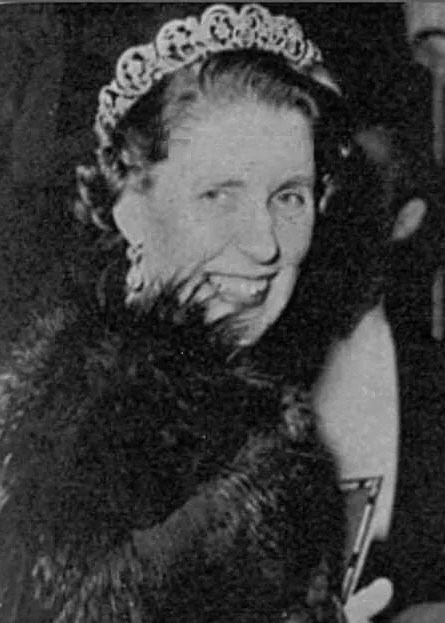

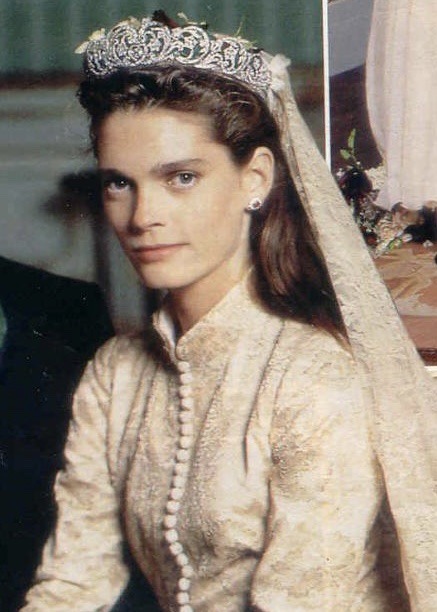

Royal Tiaras Highlights: The Spencer Tiara
Having been worn by Princess Diana at her wedding, the Spencer Tiara is one of the most famous diadems in modern history. The tiara is reported to have been created originally in 1767 for Viscountess Montagu and remodelled by Garrard in the 1930s: the central motif was purportedly gifted by Lady Sarah Spencer to Viscountess Althorp, the grandmother of Princess Diana, in 1919, after which further motifs were added, resulting in the design we see today. In the mid-1970s, John Spencer, the 8th Earl Spencer, inherited the tiara. It was subsequently worn by all three of his daughters at their wedding: Lady Jane in 1978; Lady Sarah in 1980; and finally Lady Diana the following year, in 1981. The tiara was most recently worn by Celia McCorquodale - niece of the 9th Earl Spencer Charles - at her wedding in the Spring of 2018. The Spencer Tiara remains in the possession of the Spencer family.
Via Sotheby’s
#not technically a royal tiara but still gorg#spencers#princess diana#tiaras highlights#royal jewelry#royal jewels#tiaras#brf
88 notes
·
View notes
Text

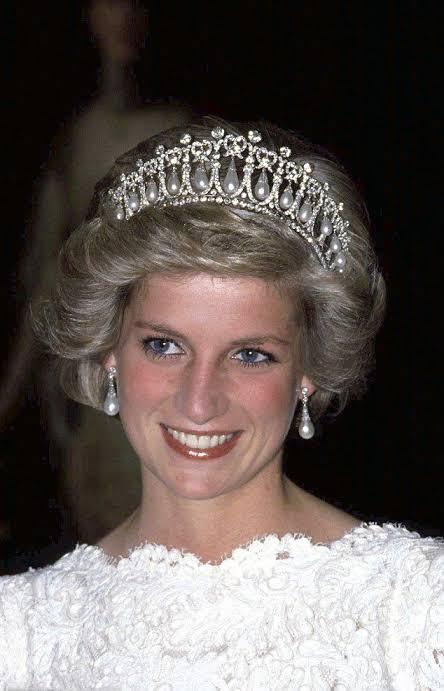
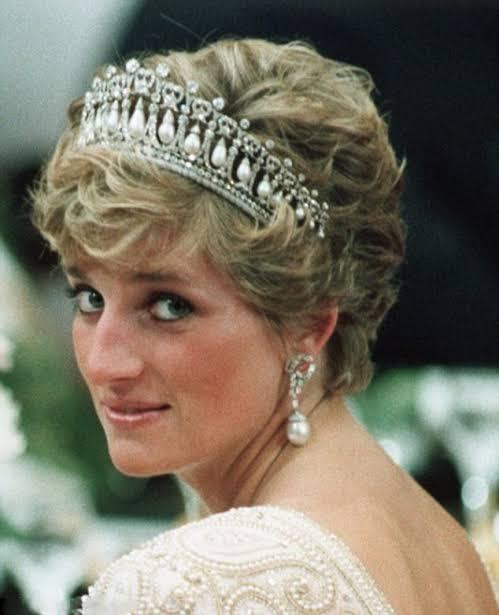







Lady Diana Spencer cambridge's lovers knot tiara
#tiara#kate middleton#icons#british royal family#lady diana#england#ingiltere#princess of wales#prenses#princess kate#lady diana spencer#princess
8 notes
·
View notes
Text
I know next to nothing about the greater Hellraiser lore and only care about the comics when it validates my ship anyway was Elliot Spencer related to Diana Princess of Wales y/n
#i have been haunted by this question its been keeping me up at night#considering how old the spencer family is like how can the answer not be yes#hellraiser#could he wear the spencer tiara on his wedding day
7 notes
·
View notes
Photo

“Charles Spencer didn't want to loan the family tiara even to his own daughter when and not all his niece wore it at the their wedding day, what made Harry think he would have given the permission to Meghan? He never even asked to him, he was just assuming it was granted to his spouse. His arrogance is insufferable.” - Submitted by Anonymous
35 notes
·
View notes
Photo

Diana, Princess of Wales || Bellville Sassoon
62 notes
·
View notes
Text

* Coronation Tiaras *
Clementine Churchill, Baroness Spencer-Churchill, wore the Essex Tiara for the coronation of Queen Elizabeth II of the United Kingdom at Westminster Abbey on 2 June 1953.
#Clementine Churchill#Coronation Tiaras#tiara#United Kingdom#Baroness Spencer Churchill#British Nobility
50 notes
·
View notes
Text

Princess Diana in Hong Kong, 1989 🕊💐
#lady diana#princess#princess diana#tiara#80s#1980s#80s glam#80s beauty#vintage#royal#royals#royalty#british royal family#british royalty#uk royal family#royal family#fashion icon#style icon#diana spencer#lady diana spencer
55 notes
·
View notes
Text
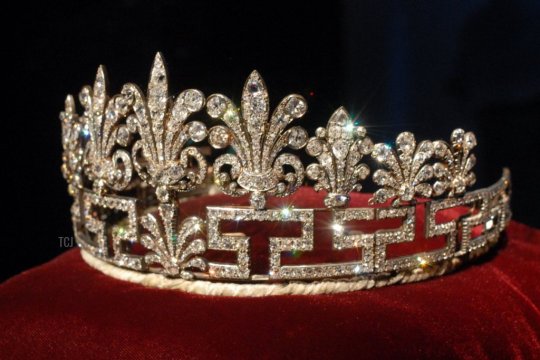
The Spencer Family's Diamond Honeysuckle Tiara As Displayed At A Preview Of The Traveling "Diana: A Celebration" Exhibit At The National Constitution Center On October 1st, 2009 In Philadelphia, PA
Photo Courtesy: William Thomas Cain/Getty Images
Source: thecourtjeweller.com
#famous jewelry#honeysuckle tiara#royal jewels#princess diana#spencer family#noble jewels#diamond tiara#diamonds#high jewelry#luxury jewelry#fine jewelry#fine jewellery pieces#gemville
136 notes
·
View notes
Text

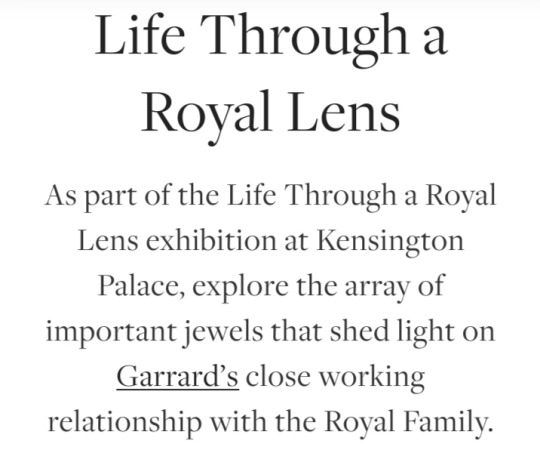
In her “accession” photographs, shot in 1952 by Dorothy Wilding, HM Queen Elizabeth II is pictured with the Girls of Great Britain and Ireland Tiara upon her head – a jewel that you might recognize because Her Majesty is seen wearing it on the front of every Bank of England banknote.
Originally the property of Queen Mary, Duchess of York, Princess of Wales and finally Queen Consort of King George V, the Girls of Great Britain and Ireland Tiara was crafted by Garrard in 1893 to be given as a wedding present from the Girls of Great Britain and Ireland committee.
Designed to be transformable, allowing it to be worn as either a necklace or coronet, over the years, Queen Mary requested that Garrard add diamonds, remove pearls, and separate the bandeau from the base so that she could wear it as a headband.
In 1947, Queen Mary gave the tiara to Princess Elizabeth as a wedding present. In 1969, now Queen Elizabeth II, she asked for the bandeau and tiara to be reunited, as it remains today.
Worn frequently by Her Late Majesty The Queen, the Girls of Great Britain and Ireland Tiara is an ongoing source of inspiration for Garrard’s designers, with the repeated pattern of diamonds encircling the base reflected in the round and geometric Windsor motif, which is a signature of the Albemarle and Fanfare jewellery collections.

The Queen’s love of brooches is legendary, and in Bob Thomas’ intimate portrait of Her Majesty at the Royal Windsor Horse Show, she is pictured wearing the Cullinan V Heart Brooch, one of several important brooches commissioned from Garrard by the Royal Family.
Showcasing the 18.80-carat heart shape Cullinan V diamond, the fifth-largest gem to be cut from the 3,106-carat Cullinan Diamond – the largest gem-quality rough diamond ever discovered – the diamond was given to Queen Mary in 1911 as a gift from the South African government.
It was originally worn by Queen Mary as part of the suite of jewellery made by Garrard for her to wear at the Delhi Durbar in 1911.
When Queen Mary died in 1953, the Cullinan V Brooch was passed to her granddaughter, Her Late Majesty Queen Elizabeth II, who was photographed wearing it throughout her reign.

The Sapphire and Diamond cluster ring worn by Catherine, Princess of Wales, formerly Duchess of Cambridge, in the 2013 portrait by her father Michael Middleton is among Garrard’s best-known creations.
Set with a magnificent 12-carat oval Ceylon sapphire, encircled by a cluster of diamonds set in 18 carat white gold, the ring was personally chosen by Lady Diana Spencer for her engagement to Prince Charles.
It became instantly famous after it was prominently showcased in an engagement shoot in 1981 that took place in the grounds of Buckingham Palace.
A new chapter in the story of Princess Diana’s engagement ring was written when, in 2010, William, Prince of Wales, formerly Duke of Cambridge, chose to propose to Catherine Middleton with the same engagement ring his father had given to Diana.
As this royal jewel, passed down through generations, takes on new meaning and sentiment upon Princess of Wales’ hand, we continue to honour this history-defining design in the 1735 collection.
Garrard’s iconic cluster setting also features prominently in the Jewelled Vault, where each one-of-a-kind creation is designed around an exceptional central stone.

A page from the scrapbook of Princess Victoria of Wales, daughter of King Edward VII and Queen Alexandra, shows photographs of Alexandra, dating from 1901, wearing a diamond crown that is much smaller than a traditional royal crown.
Crafted by Garrard in 1871 at the request of Queen Victoria, the miniature crown was designed to be worn over Queen Victoria widow’s cap.
Set with more than 1,000 diamonds and featuring alternating crosses and fleur-de-lis motifs, Garrard created the crown so that the arches could be removed.
Queen Victoria wore the Small Diamond Crown for the first time at the opening of Parliament in 1871 and frequently thereafter for state occasions.
After Queen Victoria’s death, the crown was worn by Queen Alexandra, who in turn passed it to her daughter-in-law, Queen Mary.
Today, Queen Victoria’s Small Diamond Crown is housed at the Jewel House at the Tower of London, where it is on display.
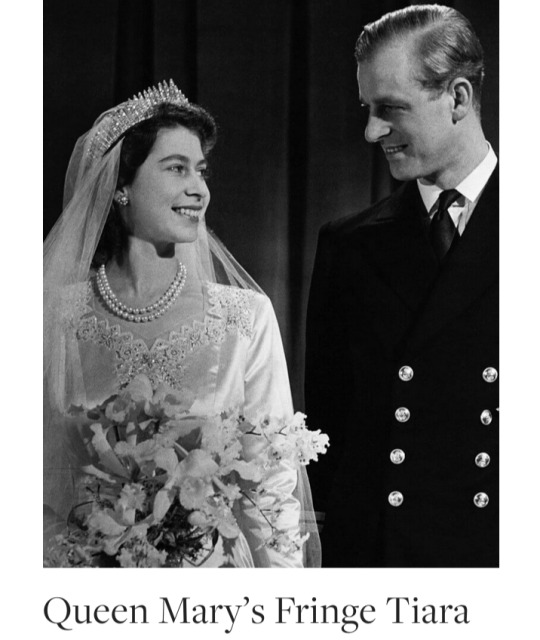
Both King George VI and HM The Queen are pictured wearing the Imperial State Crown in the Life Through a Royal Lens exhibition.
The 10th iteration of this historic jewel, the crown was crafted by Garrard in 1937 for King George VI and adjusted for The Queen ahead of her coronation in 1953.
Some of the most historic gems in the royal collection reside in this Crown Jewel, including, at the front of the crown, the Cullinan II, the second largest diamond cut from the 3,106-carat Cullinan Diamond – the largest gem-quality rough diamond ever discovered.
Above it, mounted on a diamond Maltese cross, is the Black Prince Ruby, which is not a ruby at all.
In the 16th century, it was discovered that this blood-red semi-polished stone is, in fact, a spinel, a gem that is often referred to as “the great imposter” after it was discovered that some of the most famous “rubies” seen in crown jewels around the world are, indeed, spinels.

A big moment in Garrard’s history was the recutting of the Koh-i-Noor Diamond.
This sizeable white diamond was first displayed to the public at the Great Exhibition of 1851.
In 1852, Prince Albert, who was instrumental in the creation of the Exhibition, commission Garrard to recut the diamond.
The intensely demanding cutting process lasted eight weeks and was overseen by The Duke of Wellington.
Garrard worked to create more facets to enhance its beauty; consequently, the diamond emerged as a dazzling brilliant weighing 105.6 carats.
In 1911, the Koh-i-Noor was set into Queen Mary’s Crown, newly created by Garrard for the Coronation.
Today, the fabled Koh-i-Noor Diamond (which is now only worn by a woman – if a man wears it, he will supposedly be cursed) is set at the centre of The Queen Mother’s Crown created by Garrard in 1937.

In a black-and-white photograph taken at the Delhi Durbar in 1911, held to mark the coronation of King George V and Queen Mary as Emperor and Empress of India, Queen Mary is pictured wearing the magnificent Delhi Durbar Suite.
Created by Garrard at the request of the Queen, who wanted a suite of jewels that perfectly captured the majesty of the occasion, the suite included an emerald and diamond tiara, earrings, a brooch, a stomacher, and a spectacular necklace.
Designed by Garrard in a striking circlet style, the Delhi Durbar necklace is set with eight large cabochon emeralds known collectively as the Cambridge Emeralds, with a pendant suspended beneath set with a ninth Cambridge Emerald.
In 1912, Garrard made slight alterations to the necklace, making the emerald pendant detachable and adding a second removable pendant showcasing the 8.80-carat marquise cut Cullinan VII diamond.
Queen Mary regularly wore the necklace and the other jewels in the parure for the rest of her life, after which they became the property of Her Late Majesty Queen Elizabeth II, who inherited the Delhi Durbar Necklace in 1953 and had worn it on many occasions.
The Delhi Durbar Tiara, meanwhile, was given by Her Late Majesty The Queen to Camilla, Queen Consort, after her marriage to His Majesty King Charles III.

Commissioned by Queen Mary in 1919, the Fringe Tiara was crafted by Garrard in the fashionable Russian style reminiscent of a kokoshnik and designed to be convertible so that it could be worn as either a tiara or a necklace.
Queen Mary gave the tiara to her daughter-in-law, Queen Elizabeth, later the Queen Mother, who was pictured wearing it in Cecil Beaton’s whimsical portrait.
Queen Elizabeth in turn loaned it to her daughter, Her Late Majesty Queen Elizabeth II, then Princess Elizabeth, to wear for her wedding to Philip Mountbatten in 1947 as her “something borrowed.”
In 1974, the Queen Mother loaned the Fringe tiara for another royal wedding, that of her granddaughter Princess Anne.
Most recently, it was worn by Princess Beatrice on the occasion of her wedding to Edoardo Mapelli Mozzi in 2020.

Originally created by Garrard in 1870 for Florence, Lady Poltimore, the 2nd Baron of Poltimore, the Poltimore Tiara was not publicly known until it was acquired by Princess Margaret prior to her engagement to Antony Armstrong-Jones in 1959.
Featuring elegant diamond scrolls evocative of flora – an enduring source of inspiration during the Victorian era in which it was made – it quickly became one of the Princess’s most prized possessions.
In the ensuing years, both Margaret and the towering jewel were regularly in the spotlight, including, most famously, the photograph on show as part of the Life Through a Royal Lens exhibition featuring the Princess wearing the Poltimore Tiara in the bathtub.
#Queen Elizabeth II#HM Queen Elizabeth II#Girls of Great Britain and Ireland Tiara#King George V#Queen Mary#Cullinan V Heart Brooch#Sapphire and Diamond Cluster Engagement Ring#Lady Diana Spencer#Diana Princess of Wales#Catherine Middleton#Catherine Princess of Wales#Queen Victoria#Prince Albert#Small Diamond Crown#Queen Alexandra#Imperial State Crown#Cullinan II#Black Prince Ruby#Koh-i-Noor Diamond#Great Exhibition of 1851#Delhi Durbar Suite#Cambridge Emeralds#Cullinan VII#Delhi Durbar Tiara#Fringe Tiara#Poltimore Tiara#Princess Margaret#British Royal Family#Dorothy Wilding#Tower of London
53 notes
·
View notes
Text
When you and the six other girls in the office decide to wear tiaras every day during the last week of December, so you bring in your entire tiara collection to share with them. 😄👑

#tiaras#things that sparkle#i actually have two more that are currently missing#probably in a box somewhere that I haven't through yet#I'm wearing my Spencer replica today
10 notes
·
View notes
Text
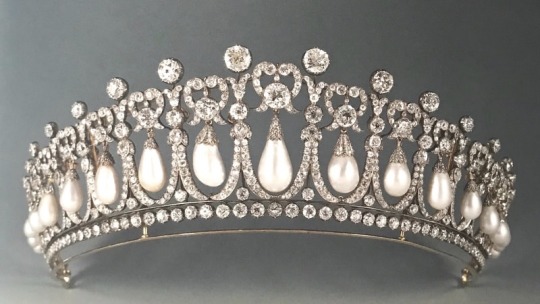
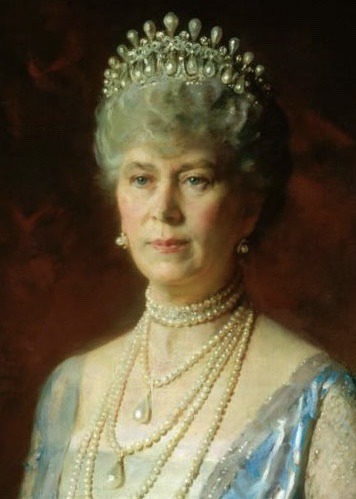


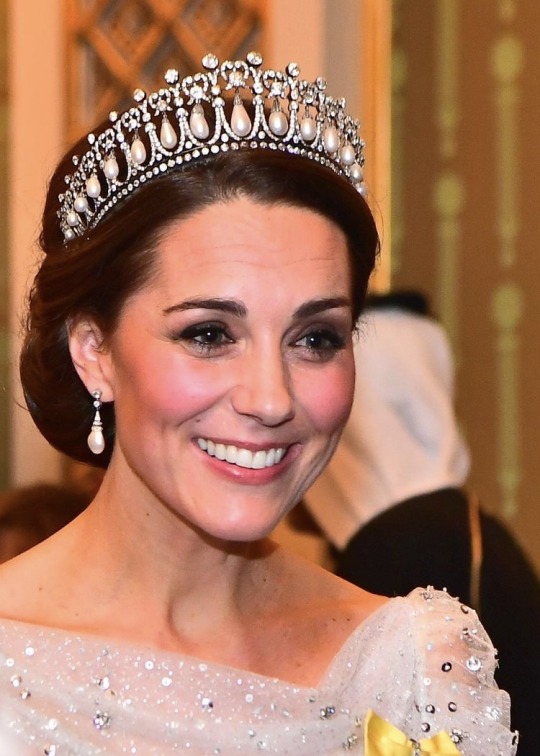
Royal Tiaras Highlights: Queen Mary’s Lover’s Knot Tiara
This tiara was made in 1913 by E. Wolff & Co. for Garrard, as commissioned by Queen Mary of the United Kingdom. She specifically asked for Garrard to make a copy of the Cambridge Lover’s Knot Tiara, a piece she admired. The original tiara was topped with a row of upright pearls - as seen on the portrait of Queen Mary - which was similar to the Cambridge Lover’s Knot but they were eventually removed and exchanged for diamonds. The diamonds and pearls used in this tiara come from a number of other pieces, including from the Ladies of England Tiara and the Girls of Great Britain and Ireland Tiara.
The tiara was inherited by Queen Elizabeth II when Queen Mary died. In 1981, Elizabeth decided to give the piece to her new daughter-in-law, Diana Spencer, although it returned to the palace vaults in 1986 when Charles and Diana divorced. Today, the tiara is frequently worn by Catherine, the Princess of Wales on tiara events.
#the og version was so pretty#sigh#tiaras highlights#brf#royal tiaras#royal jewelry#royal jewels#british jewels#queen mary#queen elizabeth ii#diana spencer#catherine#princess of wales
144 notes
·
View notes